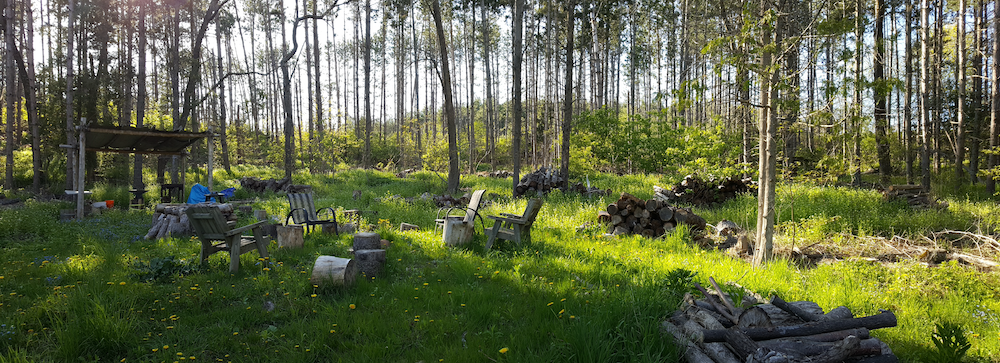Coexistence

As a long-time nature lover and organic farmer, I can almost always be found a mere walk or a bike ride away from forests or protected areas that foster biodiversity. While working in the garden at the Salt Spring Centre of Yoga for the past few years, I was surrounded by wooded areas which were home to some of the titans of the west coast such as red cedars and Douglas firs, and I’m fortunate enough these days to be able to live and work along the cusp of the Carolinian forest at Mount Wolfe Farm in southern Ontario.
As a result, my fascination with trees has increased recently, and in particular the research that Suzanne Simard has been conducting in her homeland of British Columbia on the sophisticated ways that forest trees interact and communicate with each other through their own roots as well as through networks of fungi that connect the roots of the trees to one another. The trees also require the fungi to gather and distribute nutrients and water from the soil to help tree seeds germinate and grow in a highly competitive ecological environment.
Simard’s most recent findings suggest that the most mature and enduring trees in any ecosystem, which she calls “mother trees”, go one step further in their beneficial impact on the well-being of the whole forest community. They serve as the hubs of information and communication in the forest, and will even recognize and nurture their own seedlings, protecting them from predators as well as adverse weather conditions such as frost or excessive heat, all of which are crucial roles in ensuring the survival and regeneration of forests.

These concepts have been foremost on my mind as the Annual Community Yoga Retreat weekend approaches. Although the vast majority of Satsang members and devotees of Baba Hari Dass once again won’t be able to attend the retreat in person as we have in previous years, it is a good reminder that we are all part of a cohesive community with networks spanning vast distances to connect us all. The Centre continues to nurture us all through its teachings and its ceremonies and its offerings, both online and in person, and participating in the annual retreat is, for me, both a way to reconnect with the family of karma yogis with whom I have shared numerous special moments over the years, as well as to foster resilience and regeneration in the face of adversity.
In gratitude,
Daniel Naccarato
